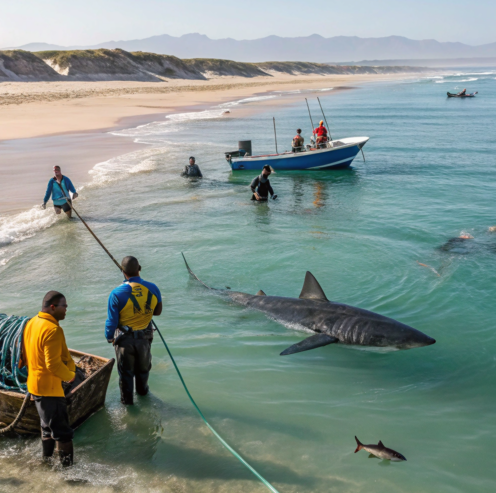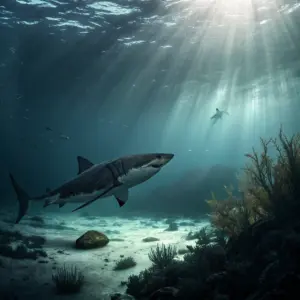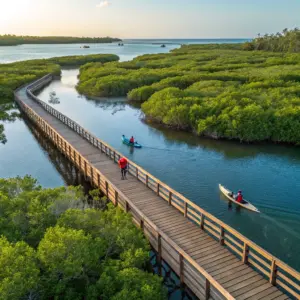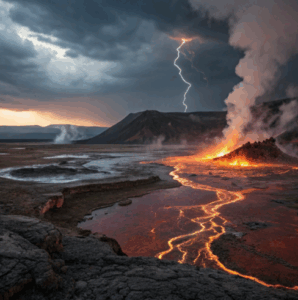For years, the cold, shadowy waters of False Bay were ruled by powerful apex predators — great white sharks. They moved silently, dominating the ecosystem with bursts of speed that shattered the calm sea.
False Bay: A Changing Ecosystem

Stretching across almost 380 square miles, False Bay has long been a seasonal home for Carcharodon carcharias, better known as the great white shark.
In colder months, sharks gathered around Seal Island, where tens of thousands of Cape fur seals (Arctocephalus pusillus) lived. In warmer seasons, they hunted closer to shore, preying on fish and even large competitors like sevengill sharks (Notorynchus cepedianus).
But after 2015, this rhythm started to break down.
Boat surveys conducted over 20 years showed an 82% drop in shark sightings between 2016 and 2020.
Since August 2018, no white sharks have been recorded in False Bay.
What Caused the Disappearance?
The exact reasons remain unclear, but two major theories stand out:
- Increased shark removals through coastal control programs.
- Predation by orcas, specialized killer whales known for targeting sharks and extracting their livers with precision.
Whether caught in fishing nets or hunted by orcas, the result is the same: the sudden loss of an apex predator.
The Ripple Effect on the Food Chain
The absence of great white sharks set off a series of changes:
- Cape fur seals, once under constant threat, quickly adjusted.
- Their population expanded, and sightings rose by 520% — from about 10 sightings per million visitors (2009–2015) to more than 65 sightings after 2016.
- Seal stress levels dropped, and they began to spread across a wider coastline.
Meanwhile, another big change surfaced:
Sevengill sharks, previously rare near Seal Island, started appearing in surveys.
With white sharks gone, the predator hierarchy shifted, and sevengill sharks began preying more heavily on smaller sharks and rays.
This phenomenon — known as a trophic cascade — shows how the loss of one key species can ripple through the entire ecosystem.
A Complex New Balance
The increases in seal and sevengill shark populations are now putting pressure on smaller fish and shark species.
However, the results are not always simple cause-and-effect. Environmental factors, such as water temperature and food availability, also shape the outcomes.
A similar situation studied on Australia’s Great Barrier Reef found that changes in shark numbers did not always predict changes in prey populations.
In False Bay, too, other variables are influencing the story.
Why It Matters
The disappearance of great white sharks marks a clear turning point for False Bay’s marine life.
Long-term studies reveal how critical top predators are in keeping ecosystems stable — even when they are hard to track, highly mobile, and elusive.
While white sharks may still survive in other parts of South Africa, their absence from False Bay leaves a clear gap, filled now by new behaviors, rising populations, and shifting predator roles.
The future balance of False Bay will depend on who — and what — steps into the space they left behind.




